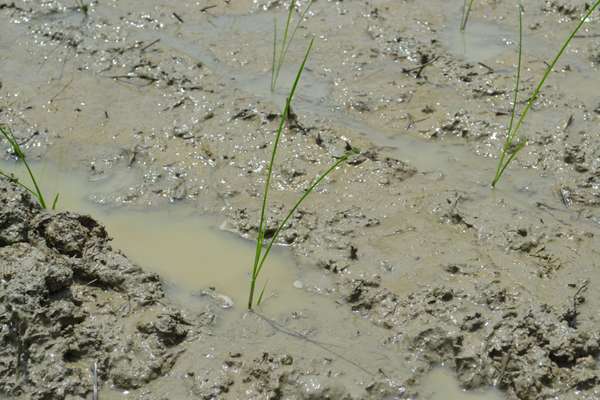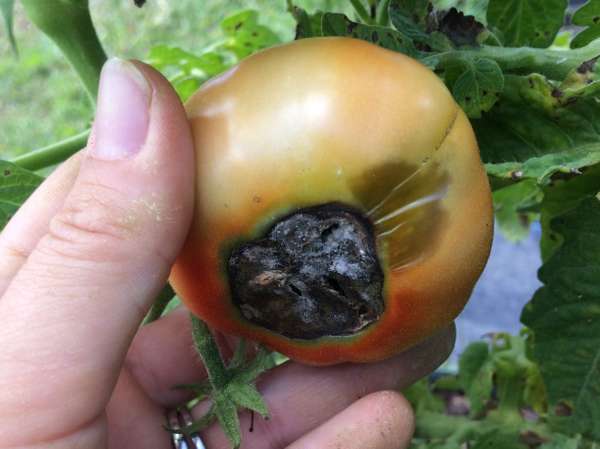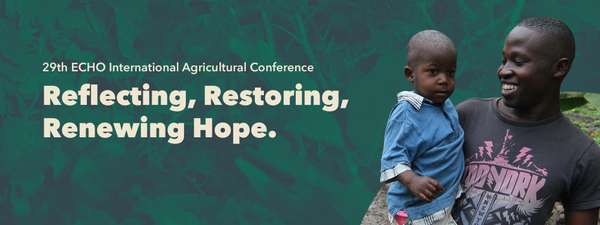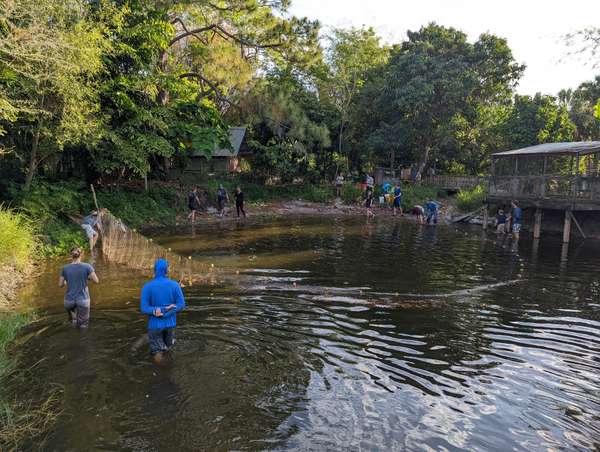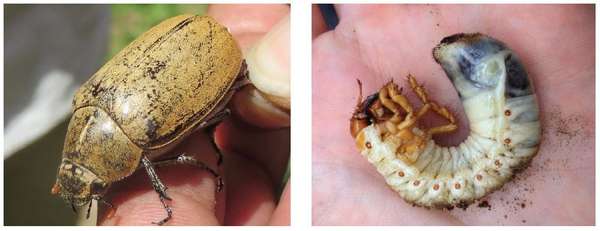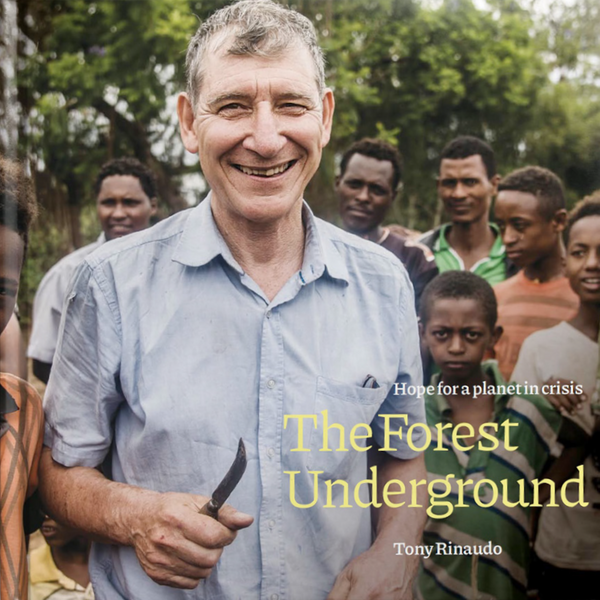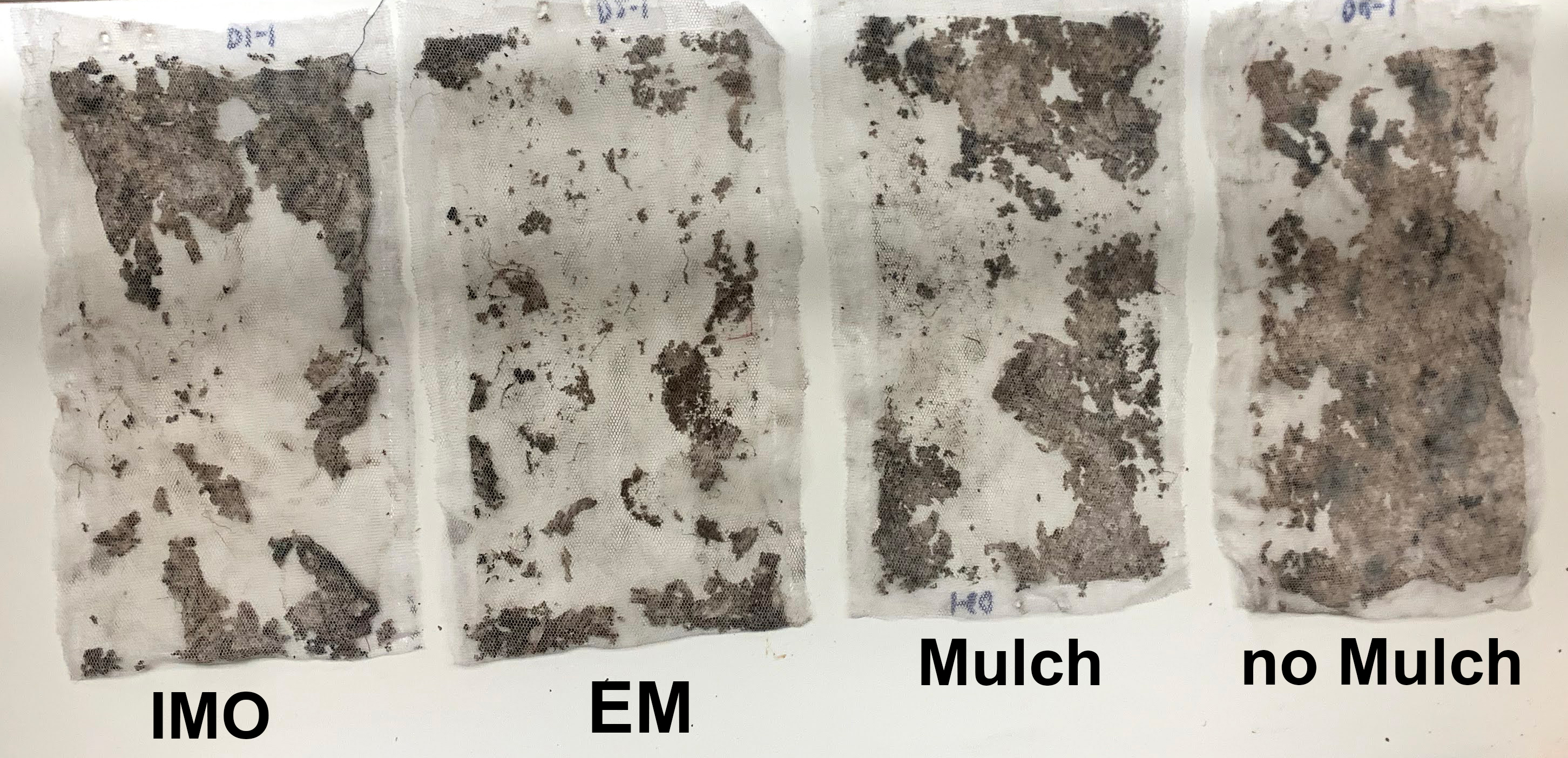ECHOcommunity Updates
From ECHO's Interns 2022-07-05
Beginning in early June, ECHO Florida interns have been studying agronomic crops. Shealyn Otto and Sammie Brittain are two interns who’ve been applying their knowledge on the farm, learning about rice. Using the 'Diamond' variety of rice, along with the System of Rice Intensification (SRI) method, these interns are experiencing hands-on learning.
The planting process has taken two weeks, while harvest won’t be until late October-early November. To begin the SRI method, the interns soak the seeds for 24 hours, then plant them into a seedling bed and water them three times a day. The growth process of the seedlings ranges from eight to fifteen days before they are ready to be transplanted. While this process takes place, the pigs of ECHO’s farm eat away at the weeds of the rice paddy. The interns then extract what is left to prepare the paddy for planting. This June, the interns planted around 60 grams of rice.
“It’s been interesting because the research makes it feel like everything has to be measured and perfect, when in reality the process is a lot more flexible,” Shealyn Otto.
“This process has given me a greater appreciation of that cup of rice I have for dinner, knowing how much work went into it,” Sammie Brittain said.
The interns will present their findings to their instructors Stacy Swartz, Andy Cotarelo, and fellow interns in September. The interns notice the benefits of using the SRI method of planting versus the traditional method, as they see the potential of higher yield for farmers globally. SRI requires less seed, pesticides, and herbicides and only needs to be flooded once a week. Experimenting with SRI allows interns at ECHO to discover methods that can benefit farmers globally.
“We have the opportunity to do experiments at ECHO that other farmers may be unable to because growing rice is their livelihood,'' Sammie Brittain said. “We can then send the research from our experiments to those same farmers.”
To learn more about the SRI method and its potential benefits, here is a link with more information. SRI, the System of Rice Intensification: Less Can be More
EDN #156 Now Available 2022-07-01
In this issue:
- Extending Postharvest Life of Fresh Fruit: Harvest for Quality
- Chicken Compost System
- Echoes from our Network: Microcontroller use
- From ECHO's Seed Bank: Allium cepa ‘Awahia’ A Short-Day Onion Option
- Books, Websites, and Other Resources: Discount on Roland Bunch's Second Edition of "Restoring the Soil"
Extending Postharvest Life of Fresh Fruit
Harvest for Quality
Tim Motis
Excerpt:
Papaya fruit have thin skin susceptible to abrasions and punctures. Skin injuries lead to green blemishes (that remain when the fruit is ripe), weight loss, and disease infection (Quintana and Paull, 1993; Sugano et al., 2013). A poster by Sugano et al. (2013) illustrates the following techniques to minimize papaya fruit damage:
- Use both hands when harvesting a fruit, to keep the fruit being harvested from rubbing against remaining fruit on the tree.
- Wear clean gloves to avoid fingernail damage and buildup of dried sap.
- Trim fruit stems before putting fruit into harvest containers.
- Remove dried sap and soil particles from fruit and harvest containers; this can be done by cleaning with a moist cloth.
- Line harvest bins with material like foam, newspaper, or cardboard.
- Place fruit into harvest containers with the stem ends facing downwards. This minimizes blemishing caused by sap leaking out of cut stems.
- Cover the bins with a blanket to shade the fruit and minimize abrasions during transport.
ECHO East Africa Pastoralist Symposium Videos are Available Now 2022-06-28
The ECHO East Africa Pastoralist Symposium was held online in March, 2022 with about 300 registered attendees. Recordings of the presentations are available now in ECHOcommunity by going to the link http://edn.link/2022eapastoralist .
Crop Management Tip: Blossom End Rot 2022-06-22
Have you experienced blossom end rot before? Blossom end rot is commonly found on tomato, zucchini, pepper, squash, eggplant, and watermelon fruit. It's often mistaken for a disease, but it's actually caused by calcium deficiency in the plant (not always in the soil)! Calcium is a macronutrient required for plant cell walls and cell elongation among other functions. Calcium is taken up passively into plant roots along with water. Deficiency symptoms in leaves are rare so sometimes it is difficult to know if plant calcium is low until blossom end rot appears! Blossom end rot is more common if the growing season begins wet and then shifts to become dry during fruit set. This causes calcium absorption to decrease in the plant as fruit develop. If your growing season is following this trend, practice good irrigation management to increase calcium absorption potential during fruit development.
Calcium is most available in soils with neutral pH (around 7) and becomes less available in slightly acidic (pH of 6) or slightly alkaline (pH of 8) soils. Adjusting your soil pH may help increase calcium availability and reverse the effects of blossom end rot. Options for increasing calcium content of deficient soils include lime (which will increase soil pH), gypsum (which will not change soil pH), or crushed egg shells, oyster/snail shells, or animal bones (bone meal).
Some varieties are prone to blossom end rot while others are resistant to it. Keep good plant records to better understand what crops and varieties show calcium deficiency in which areas of your field or garden.
Registration is Open: ECHO International Agriculture Conference 2022 2022-06-07
For twenty-eight years, ECHO has brought together networks of like-minded individuals devoted to eradicating hunger and improving lives through agriculture and community development. For the past two years, due to novel coronavirus, ECHO’s Annual Conference moved online. This year we are returning to our in-person event. We are thrilled to invite you to join us in Fort Myers, Florida on November 15th-17th to connect once again together on ECHO’s Florida Campus. The ECHO International Agriculture Conference will return with speakers addressing agricultural challenges, personal experiences, and strategies for improving the lives of millions who daily face food insecurity.
Lessons We’re Learning while Seining our Ponds 2022-05-31
Last month, at the height of the dry season, we completed our annual fish harvest on the ECHO Global Demonstration Farm in Florida, USA. For years, seining our ponds has been an incredibly difficult task. With large amounts of mud and muck on the pond bottoms, our nets become filled with mud as the lead line sinks deep into this layer. Unlike previous years, however, we approached the arduous task of seining a bit differently. After coming across this resource from the University of Auburn, we decided that surely, we could improve our process.
Following the advice from the video, we installed a “mud line.” A mud line is typically made up of bunched-up netting or large non-buoyant ropes strung together and attached to the lead line. This increased surface area allows the net to sink to the pond bottom yet float on top of the mud. While we had some pieces of old seine nets to use, we didn’t have enough, so we improvised with burlap sacks. Once the sacks were saturated with water, they sank without a problem. While the burlap worked, we think the better option is using non-buoyant nets as they conform better to the bottom of the pond.
This improvement made for an entirely different seining experience. The net could be easily pulled with two people at each side, and when we reached the end of the pond, the net was no longer filled with mud and muck. We may not have netted every large fish, as some may have been able to find gaps between the burlap sack and the bottom of the pond, but our final numbers yielded similar results from previous years. This improvement was successful enough that we hope to collect enough netting to swap out the burlap sacks and continue using this technique in the future.
Integrated Pest Management Technical Note NOW AVAILABLE! 2022-05-24
Pest control is a crucial part of farmer management of agroecosystems. The current global situation calls for a multi-pronged approach to pest management. To be widely applicable, this approach must provide farmers with options to control pests at various scales of production (from small farms to very large operations) with a diversity of resources. Integrated pest management, a strategy based on farmer innovations, is highly adaptable to specific contexts and reduces dependency on pesticides while still recognizing their use.
In this technical note, we share ideas and concepts for a diversified and holistic approach to agricultural pest management with a primary focus on insect pests. We hope you engage and learn from this resource. If you have other approaches to pest management that have worked for you in your context, please share them with the global ECHO Network on ECHO Conversations!
The Forest Underground: Hope for a Planet in Crisis NOW AVAILABLE! 2022-05-17
Tony Rinaudo has lived in worked in arid environments since 1981. Through his natural discovery and questioning of systems in nature, Tony pioneered Famer Managed Natural Regeneration or FMNR as a way farmers can help build soil health from the ground up! His work has impacted hundreds of thousands of lives around the world and has transformed more than 18 million hectares in 27 countries. You can read Tony's approach in ECHO Technical Note 65 (authored by Tony Rinaudo). His autobiography, The Forest Underground: Hope for a Planet in Crisis was published in April 2022 by ISCAST and is available on Amazon. It is available in Hardcover, Paperback, and Kindle.
“No research program—no matter how well funded—would have come up with this idea, because it expertly combines the subtleties of location-specific tree selection with farmer-specific opportunities and constraints."
- Richard Stirzaker, Principal Research Scientist, CSIRO, Australia’s national science agency
Find out more about the book at iscast.org/tfu.
ECHO Research Highlight: Low-Cost Seed Storage Technologies 2022-05-09
Seeds maintained by local, community seed banks help protect crop diversity. Small-scale seed banks in the tropics often operate with few resources and under conditions of high heat and humidity that favor the rapid deterioration of seeds. In 2017, ECHO’s seed bank in Thailand led a joint effort with ECHO’s Florida-based seed bank to investigate low-cost methods of storing seeds in places without electricity for climate-controlled storage. It compares a range of technologies available in Thailand, including two vacuum sealing approaches (machine-sealing versus a modified bicycle pump) and two desiccants (calcium oxide [burnt lime or quicklime] and Zeolite Drying Beads®). These technologies were evaluated over a 1-year period with seeds of three crops: sorghum, velvet bean, and cowpea. Simply drawing a vacuum on seeds in glass jars, using a cheaply-modified bicycle pump, turned out to be a top-performing treatment! Zeolite beads were highly effective in lowering the moisture content of seeds and keeping them dry. Findings were published in Experimental Agriculture in 2021. Click here to view the abstract, which will contain more details. We were unable to publish the article with open access to the full manuscript, but we plan to summarize the main points in a future issue of ECHO Development Notes.
Simple Soil Life Assay using Cotton 2022-05-04
Robust soil life is vital to healthy soils. Soil microbes help cycle plant essential nutrients, release bioslimes, hyphae, and other "glues" that help form soil aggregates, and some even release plant hormones that trigger important plant processes such as flowering! As vital as these tiny soil livestock (as farm manager Andy Cotarelo likes to call them) are, testing for microbial populations or identification can be both difficult and expensive. Inspired by the Natural Resources Conservation Service Oregon challenge that helped spark greater interest in soil microbial health in the United States, ECHO Florida tried our own cotton strip trial to approximate soil microbial activity in different soil treatments. Using strips of cotton sealed in old mosquito netting (to exclude arthropods), we measured the amount of cotton decomposed over time. Check out our methods and results in our recent Research Update Blog. Try it in your own fields or gardens and let us know what you learn!
